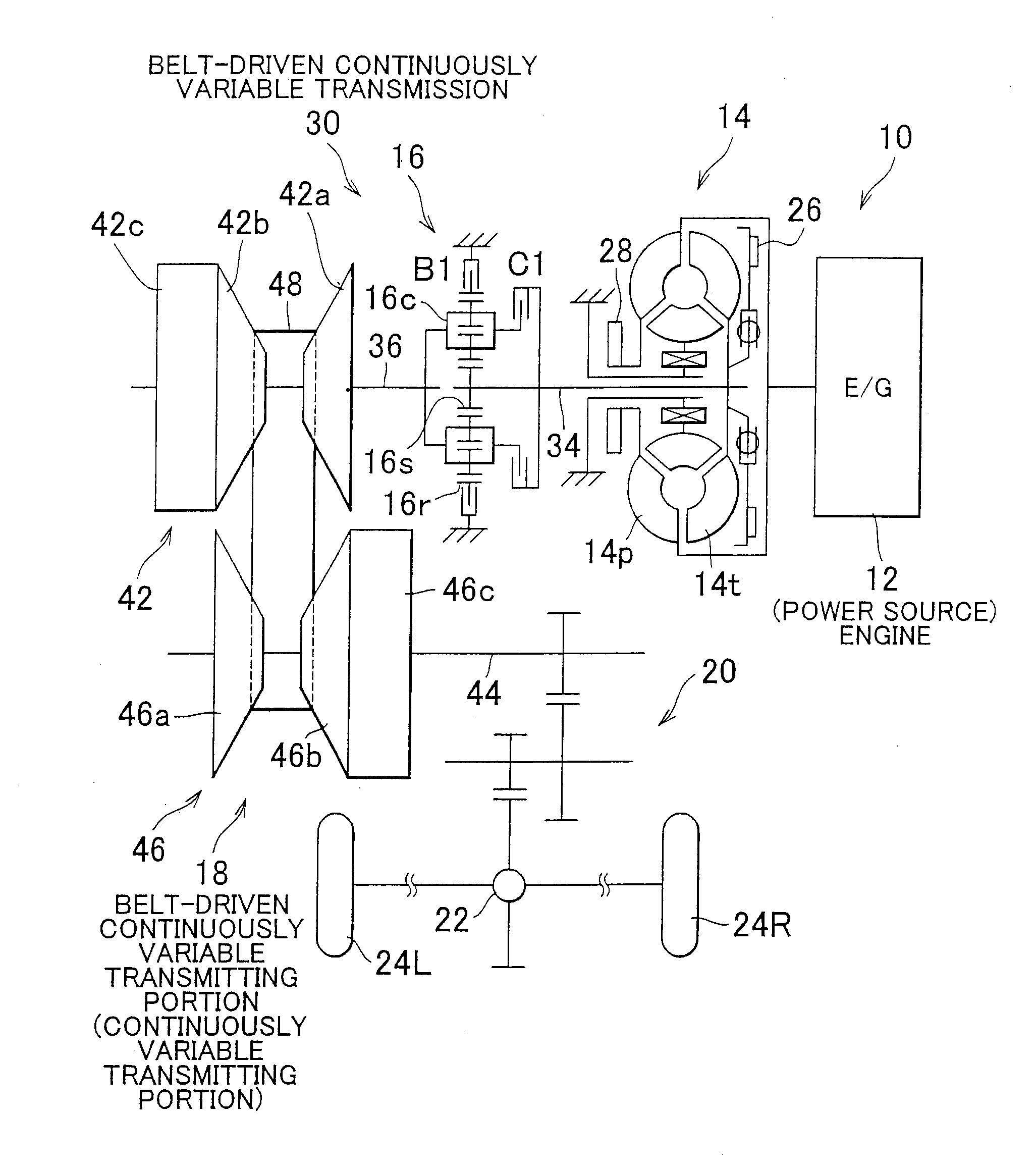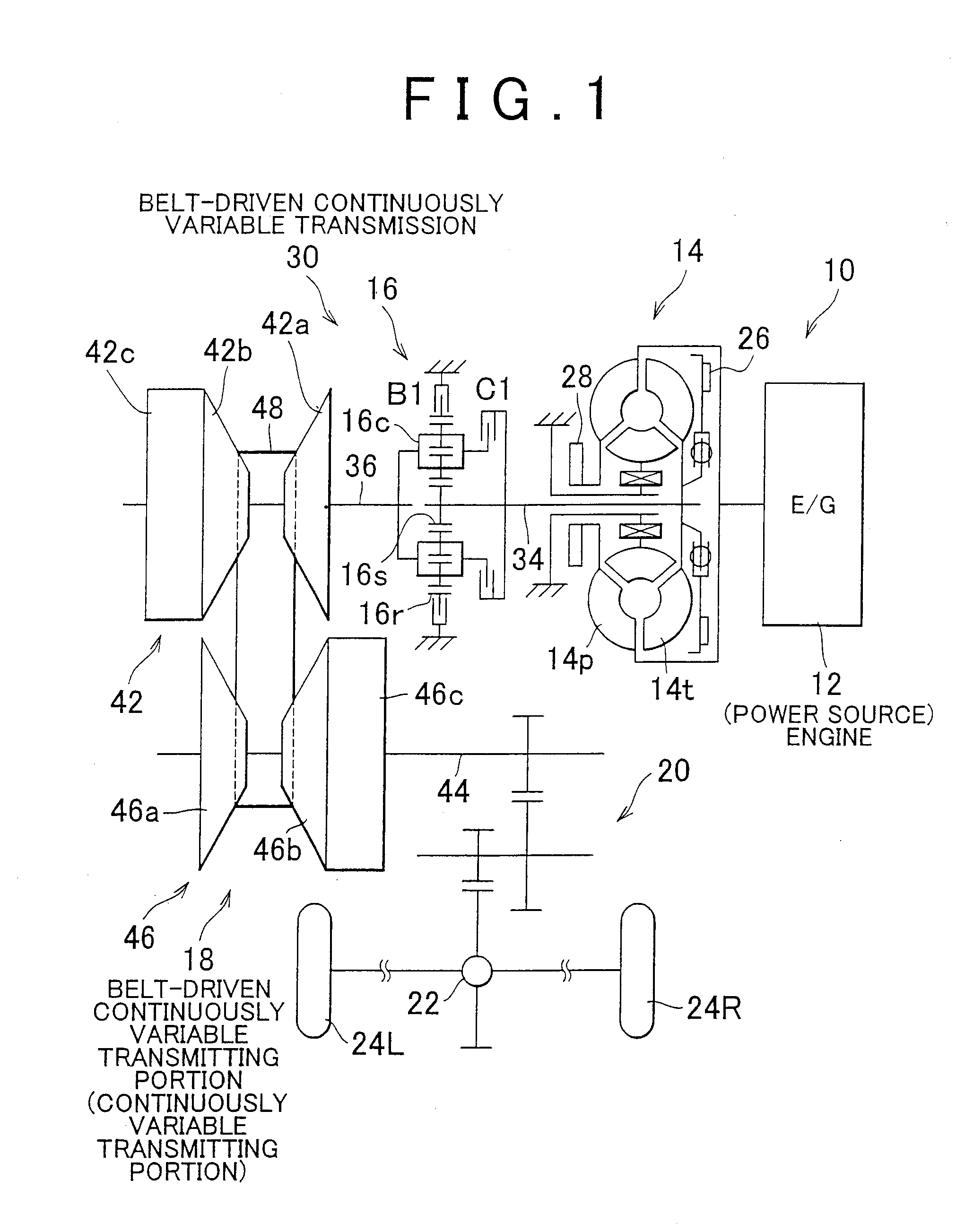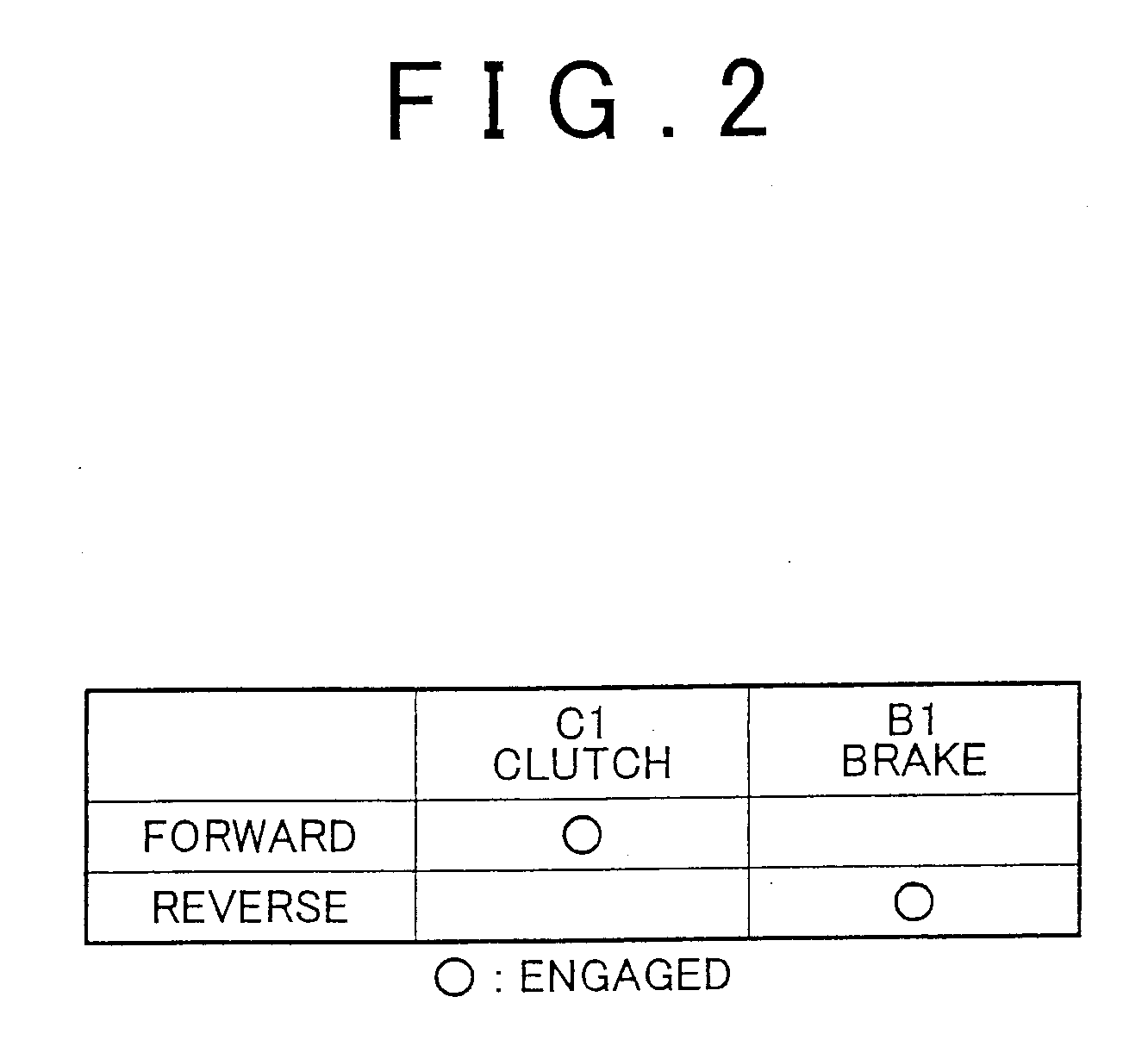Vehicular belt-driven continuously variable transmission and control method thereof
a technology of continuously variable transmission and control method, which is applied in the direction of gearing control, gearing elements, gearing squeezing force, etc., can solve the problems of increasing the cost of continuous variable transmission, so as to achieve simplified structure
- Summary
- Abstract
- Description
- Claims
- Application Information
AI Technical Summary
Benefits of technology
Problems solved by technology
Method used
Image
Examples
Embodiment Construction
[0024]FIG. 1 is a skeleton view of a vehicular power transmitting device 10 according to one example embodiment of the invention. The vehicular power transmitting device 10 is an automatic transmission for a transverse mounted engine and may be employed in a FF (front engine, front drive) vehicle. The vehicular power transmitting device 10 includes an engine 12 that serves as a power source for running. Output from the engine 12, which is an internal combustion engine, is transmitted from a crankshaft of the engine 12 and a torque converter 14, which is a fluid coupling, to a final reduction gear 22 via a forward-reverse switching apparatus 16, an input shaft 36, a belt-driven continuously variable transmitting portion 18, and a reduction gear device 20, after which it is distributed to left and right driven wheels 24L and 24R. Here the forward-reverse switching apparatus 16 and the belt-driven continuously variable transmitting portion 18 together form a belt-driven continuously va...
PUM
 Login to View More
Login to View More Abstract
Description
Claims
Application Information
 Login to View More
Login to View More - Generate Ideas
- Intellectual Property
- Life Sciences
- Materials
- Tech Scout
- Unparalleled Data Quality
- Higher Quality Content
- 60% Fewer Hallucinations
Browse by: Latest US Patents, China's latest patents, Technical Efficacy Thesaurus, Application Domain, Technology Topic, Popular Technical Reports.
© 2025 PatSnap. All rights reserved.Legal|Privacy policy|Modern Slavery Act Transparency Statement|Sitemap|About US| Contact US: help@patsnap.com



